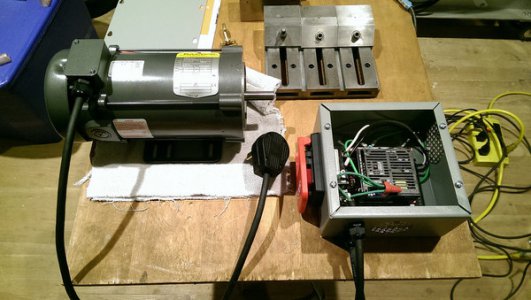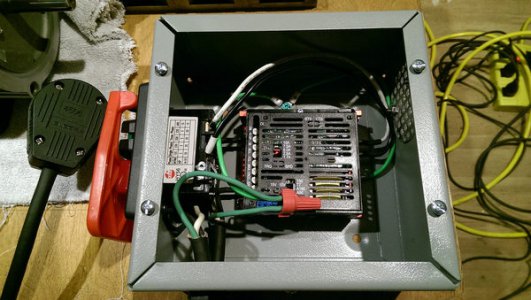- Joined
- Mar 25, 2013
- Messages
- 4,615
No takers on the ground question????
I have everything wired up and tested!


This control seems really great. When I switch from FORWARD or REVERSE to STOP, the control brakes the motor to a stop in about 1 sec. If I open the enable switch it stops much more quickly, like in 0.2 sec. This will be great for the ESTOP. The large switch you see mounted in this box will be the main disconnect.
More will be forthcoming!
R
I have everything wired up and tested!


This control seems really great. When I switch from FORWARD or REVERSE to STOP, the control brakes the motor to a stop in about 1 sec. If I open the enable switch it stops much more quickly, like in 0.2 sec. This will be great for the ESTOP. The large switch you see mounted in this box will be the main disconnect.
More will be forthcoming!
R

